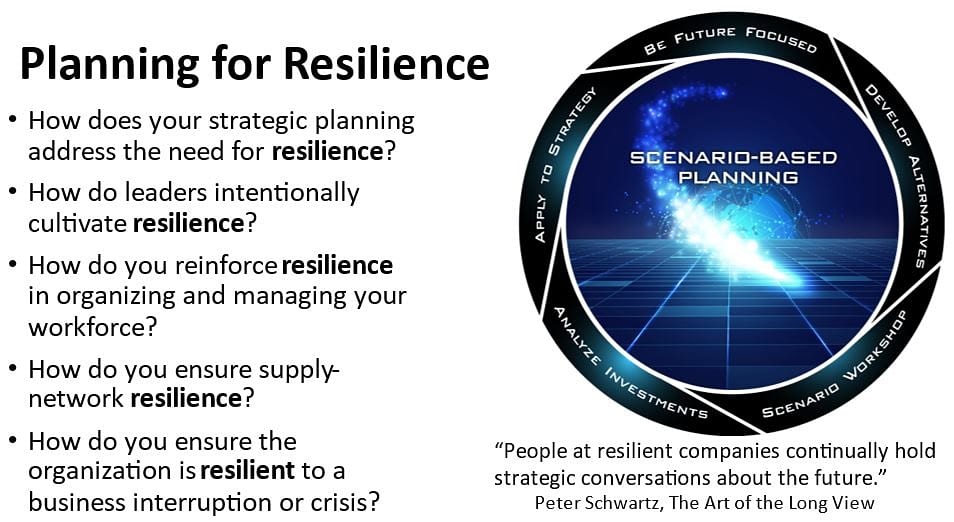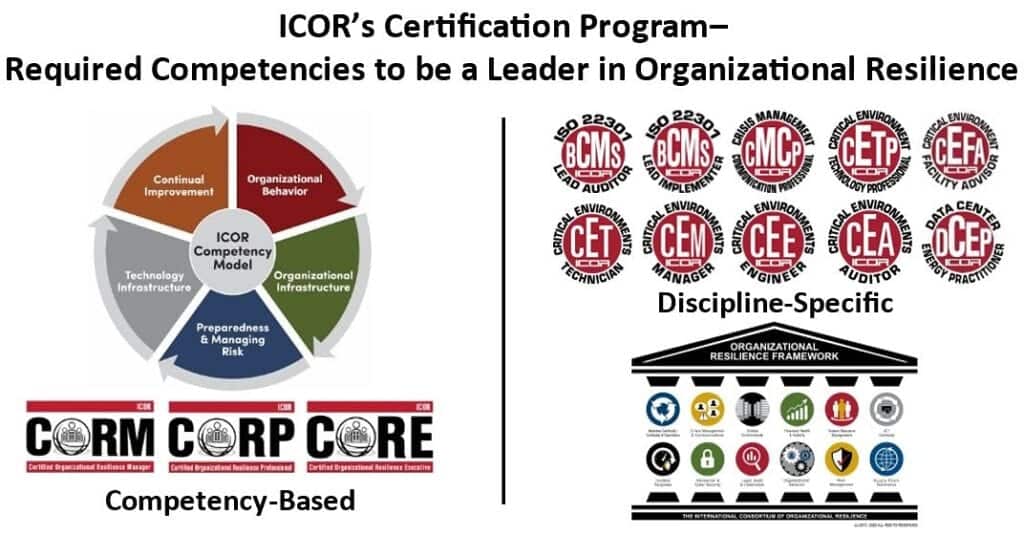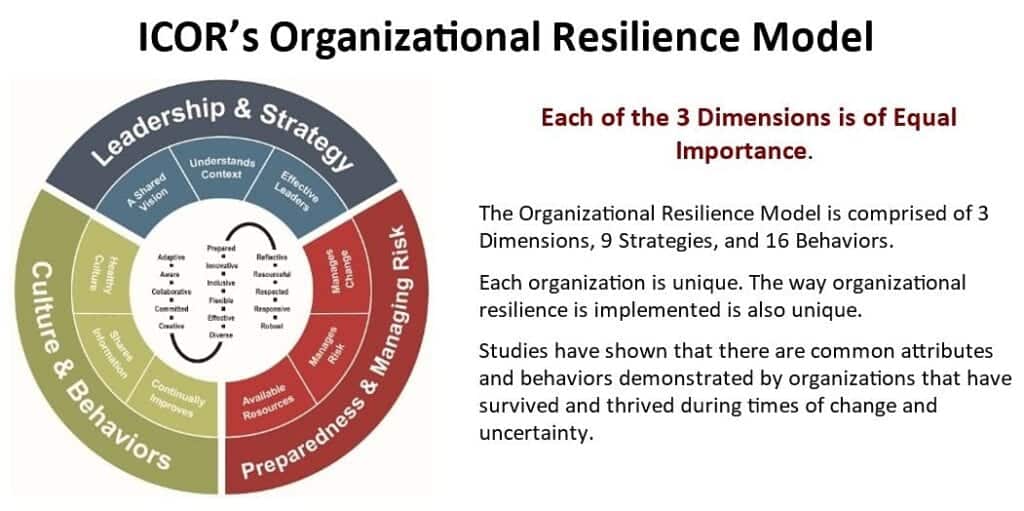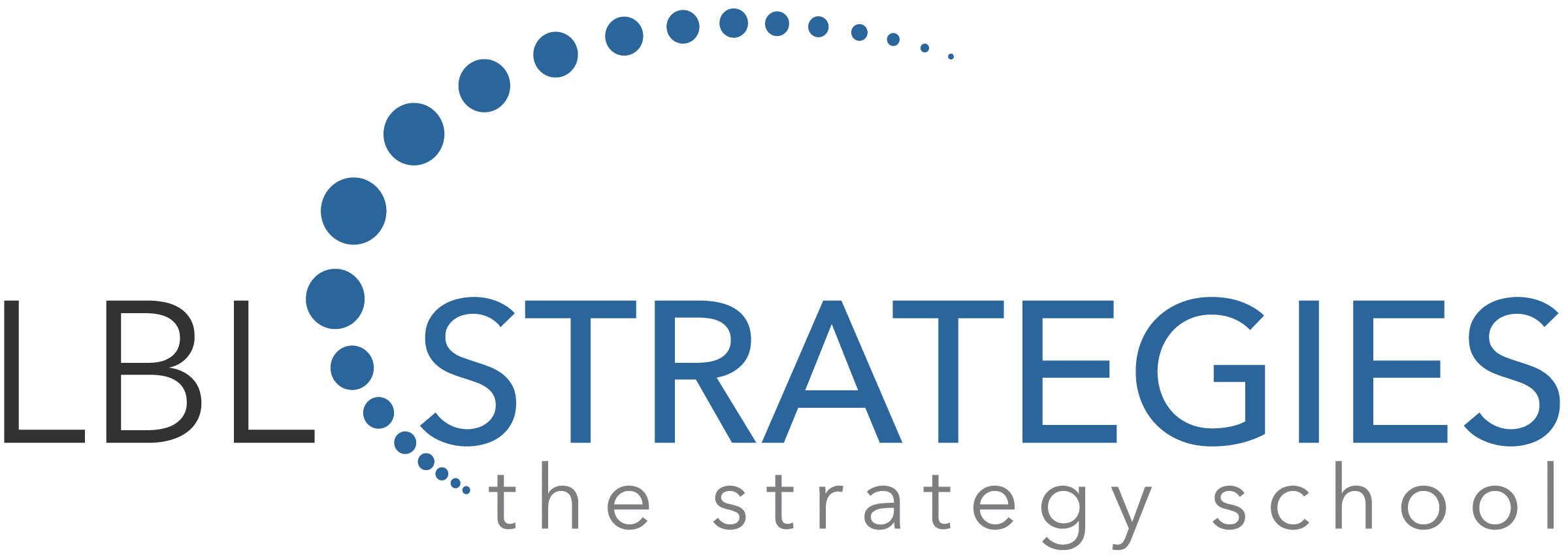Part 1: Individual Resilience
For the past year I’ve considered the possibility of creating a course in “Organizational Resilience.” The reason for my interest centers on the notion that organizations can be top quartile performers from the perspectives of strategic management, foresight, agile organization design, etc. but still fail if their team cannot get up once they have been knocked down. If the pandemic has taught us anything it is that resilience is key in today’s operating environment.
As I began my exploration of this topic, I found myself conflating individual resilience and organizational resilience. I now know these two states of resilience are closely related but still quite different.
As I considered the importance of resilient individuals, I immediately thought of Admiral James Stockdale, the highest-ranking military officer (and prisoner) in the “Hanoi Hilton” POW camp during the Vietnam War. Years after he returned to civilian life Jim Collins, Author of Good to Great interviewed Admiral Stockdale asking him about the key to survival in such a perilous situation as the one he and his fellow prisoners found themselves in at the Hanoi Hilton.
Admiral Stockdale replied, “You must maintain unwavering faith that you can and will prevail in the end, regardless of the difficulties, and at the same time, have the discipline to confront the most brutal facts of your current reality, whatever they might be.” (Stockdale Paradox) [i]
When asked to explain further, Admiral Stockdale reported optimistic prisoners who believed year after year they would be home by Christmas, and were not, fared far worse than those who had faith they would eventually be freed but must endure until that day came.
We humans have an innate need to understand what could plausibly lie ahead. We do this considering alternatives that give us the best chance of a positive outcome and maintaining enhanced “faith” in our ability to achieve success. Absent positive synergy, we become anxious, uncertain, emotionally stressed and, in some cases, unhealthy as a result. At the organizational level we’ve long emphasized the importance of facing what Stockdale and Collins labeled as “brutal facts” as a primary precursor for successful strategy formulation and implementation, and, by extension, improving the emotional health of one’s team.
The Stockdale Paradox teaches us the importance of confronting the harsh realities of where we find ourselves in today by recognizing the human and economic toll the pandemic has wrought…and continues to. By doing so we arm ourselves and our team with eyes wide open understanding of facts, feelings, implications, skill gaps and possible solutions.
My understanding of the importance of “individual resilience” grew after attending a talk on the subject given by Dr. Paul Stoltz at DePaul University. I remember his first statement “If resilience is about how you respond to adversity, GRIT is about how effectively, wholeheartedly, and relentlessly you pursue your aspirations… GRIT is one’s capacity to dig deep, to do whatever it takes – especially struggle, sacrifice, even suffer – to achieve one’s most worthy goals.” [ii]
Stoltz went on to point out, the tougher conditions get, and the longer goals take to achieve, the more important GRIT becomes in all we do. Dr. Stoltz presented research demonstrating that people (and by extension teams) with greater GRIT tend to do better, achieve more, produce stronger results, innovate more, are healthier, feel more confident, enjoy greater energy, and experience a high quality of life.
Another insight on the importance of building a resilient team came after re-reading “Resilience” by Eric Greitens. Eric served as a United States Navy SEAL officer and deployed four times during the Global War on Terrorism to Afghanistan, Southeast Asia, the Horn of Africa, and Iraq. The thesis of his book is “To be resilient, you must understand your objective is not to come to rest, because there is no rest. Your objective is to use what hits you to change your trajectory in a positive direction.” [iii]
In 2012 Greitens unexpectedly heard from a former SEAL, Zach Walker. Zach had been one of the toughest of the tough, but since he returned from war to his family he struggled with PTSD, drinking, and other ill effects. Zack and Eric began corresponding and talking almost every day which inspired Eric to set down his thoughts on what it takes to be resilient in our own lives. Eventually Eric wrote his book which is a timeless guidebook on being resilient as an individual.
Part 2: Organizational Resilience
After reflecting on the Stockdale Paradox, the notion of GRIT, and Grieten’s work on individual resilience, I turned my attention to Organizational Resilience. As part of my research, I carefully reviewed the new 2021-22 Baldrige Framework with its pointed focus on the importance of organizational resilience. I began by pulling out every reference to resilience in the framework …which there were many… and I thought about each one. I quickly realized from a “Baldrige Framework” perspective, organizational resilience can be reduced to a clear definition, a logical rationale for the framework’s value, and five basic questions to ask and answer to plan for organizational resilience.
Definition: Organizational resilience is the ability to anticipate, prepare for, and recover from disruptions, and to protect and enhance all aspects of your operations when disruptions occur. [iv]
Rationale: The Baldrige Framework systems approach prepares your organization to be resilient by helping your team understand your organization, including the changing needs of the organization, workforce, customers, and stakeholders.
Five questions:
Regarding the first question: Massive disruptions are occurring across each of our organizational landscapes stemming from COVID 19…political upheaval, social unrest, climate change, advances in technology and demographic shifts. Any one of these could throw an anticipated strategy and organization off track. In this season of transformational change, the importance of leaders intentionally building organizational resilience cannot be overemphasized.
By far and away, the ability to gain foresight into what could feasibly happen going forward and what skills will be required to be successful is paramount. This can best occur by enhancing your team’s “foresight” mindset and building scenario planning skills. Additionally, leaders must cultivate agility to respond quickly to both opportunities and threats, adapt strategy to changing circumstances, and build a robust governance capability within a culture of trust.
As these insights became clear, I was again reminded that I am not an authority on planning for organizational resilience. So, what to do? I did what any good educator/consultant might do. I cried out for help! Long story short, my research on authoritative resources helping organizations and their leaders plan for resilience led me to invite Lynnda Nelson, Founder and President of the International Consortium for Organizational Resilience (ICOR) to co-present with me at the 2021, Tennessee Center for Performance Excellence (TNCPE) conference.[v] ICOR’s mission is to build more resilient communities one organization at a time. They are the global leader in organizational resilience thinking, education and credentialling.

The first thing I noted was ICOR’s alignment to ISO Standard 22316. While quite compatible with the Baldrige Framework, ISO defines organizational resilience somewhat broader and simpler than the Baldrige Framework does, (i.e., “The ability of an organization to absorb and adapt in a changing environment). [vi] Lynnda elaborated… ”Organizational resilience is the ability to absorb and adapt to enable the organization to deliver its objectives and to survive and prosper, as more resilient organizations can anticipate and respond to threats and opportunities, arising from sudden or gradual changes in their internal and external context.” The ISO 22316 definition combines the importance of being prepared with the strengthening of an organization’s overall capabilities, and an understanding of itself and its relationship with others. Below is ICOR’s resilience model:

Regarding the five Baldrige Framework questions to answer, here is a summary of Ms. Nelson’s comments on each.
Q1 – How does your strategic planning address the need for resilience?
To become resilient, leadership teams must prioritize organizational resilience as a deliberate strategic initiative. This requires a thorough understanding of the organization’s internal and external environments to make more effective strategic decisions about the priorities for resilience. Team-based scenario planning competency can play a critical role in this regard.
Q2 – How do leaders intentionally cultivate resilience?
The behavior of an organization’s leadership is a key contributor to how an organization implements its organizational resilience initiative. It must be rooted in an understanding of itself and its relationship with others. Leaders are responsible for creating a culture that fosters creativity and innovation, which enables trust and respect to occur. To realize this important cultural accomplishment, leaders must clearly articulate the organization’s purpose, vision, and values in such a way as to stir the hearts and minds of their team. This foundation then provides clarity to distributed decision-making, centered on protecting and enhancing the resilience of the organization.
From a tactical perspective, leaders should seek out and empower leaders who demonstrate personal resilience, and possess diverse skillsets, leadership styles, knowledge, and experience. This mix of “grit”, talent and wisdom is the bedrock for building organizational resilience, and achievement of strategic objectives, regardless of disruptions occurring in the environment.
Leadership must spread throughout the organization by encouraging others to lead and gain leadership experience under a range of conditions and circumstances, including during periods of uncertainty and disruptions. As a best practice leadership experiences and knowledge gained should be shared broadly.
Finally, leaders must ensure that the organization is structured and designed to enable agility, high performance, and effective change management.
Q3 – How do you reinforce resilience in organizing and managing your workforce?
Fundamentally, the organization’s workplace must be flexible, productive and allow for employee engagement and collaboration, whether that be onsite or virtual. A flexible and productive workplace requires an understanding of how work occurs so that the links between work, place, and workers are understood. To support such efforts leadership throughout the organization should intentionally implement systems and make investments in professional development to increase workforce capacity to handle stress, increase engagement, and manage continuous change.
Additionally, an organization must manage its resources in an agile manner ensuring that the right people are on the right teams at the right time. Again, leaders should assign specific roles, responsibilities, and authorities for enhancing organizational resilience – ensuring those assigned are competent, can work in an interdisciplinary team, and be able to collaborate and communicate effectively.
When done correctly a resilient organization has trusted, respected, and inspiring leaders who act with integrity and are committed to investing in their people.
Q4 – How do you ensure supply-network resilience?
It begins by ensuring the organization’s suppliers are qualified, positioned, and agile enough to meet the organization’s operational needs, enhance performance, support strategic objectives, and satisfy customers in various contexts. In parallel, the organization should understand each of the nodes and links in its supply chain and recognize and mitigate potential vulnerabilities including various dimensions of risk, continuity, and security.
If the organization monitors and evaluates the organization’s context, including interdependencies, political, regulatory environment, and competitor activities under changing circumstances (remember scenario planning) it will be well positioned to ensure consistency of its supply chain. Sometimes this translates into development of formal partnerships to deliver on its strategy and support the achievement of its purpose and objectives.
Q5 – How do you ensure the organization is resilient to a business interruption or crisis?
The alignment and collaboration of risk-based management disciplines (to prepare for the unexpected) is fundamental to enhancing organizational resilience. Again, this requires the organization to create agile processes/systems/people who can anticipate, plan for, and respond to changing circumstances. When organizations have the capacity to anticipate and respond to sudden or gradual changes in its internal and external context, they are positioned to positively influence change. Special emphasis must be put on the design, development, and coordination of the organization’s risk-based management disciplines ensuring they are aligned with the organization’s strategic objectives.
Finally, leaders much ensure resources are adequate and available to invest when needed such that the organization can remain productive and minimizes risk to operations. This translates into the ability to develop and allocate resources, such as people, premises, processes, technology, finance, and information to address vulnerabilities and increase its ability to adapt to changing circumstances.
In summary, during periods of disruption opportunity exists alongside of threats. Resilient individuals and resilient organizations can not only bounce back whole but better if proactive planning occurs around resilience. This is the time to set bold aspirations; explore alternative scenarios (not forecasts); create a set of potential strategic investments; and then adapt the organization’s strategy dynamically. This is what I have learned about how an organization plans for resilience. Thank you…
References:
[i] https://www.jimcollins.com/concepts/Stockdale-Concept.html, Jim Collins
[ii] GRIT: The New Science of What it Takes to Persevere, Flourish, Succeed, Dr. Paul Stoltz, 2015
[iii] Resilience: Hard-Won Wisdom for Living a Better Life, Eric Greitens, 2015
[iv] 2021-2022 Baldrige Excellence Framework, https://www.nist.gov/news-events/news/2020/12/2021-2022-baldrige-excellence-framework-businessnonprofit-now-available, 2020
[v] TNCPE provides in-depth, low-cost assessments of regional organizations using the Baldrige Excellence Framework (which includes the Criteria for Performance Excellence). https://www.tncpe.org/
[vi] ISO 22316:2017, Security and resilience — Organizational resilience — Principles and attributes
Education & Training in Mastering Strategy, Scenario-Based Planning & Organization Design:
LBL Strategies is a valued resource for strategy professionals across the globe from all sectors. Review the LBL portfolio of continuing professional development offerings here
We are a Registered Education Provider for the International Association for Strategy Professionals (IASP). LBL’s “Mastering Strategy” program is valued as important learning in preparation for pursuing IASP “industry” level certification at “Strategic Planning Professional” (SPP) and “Strategic Management Professional” (SMP) levels.
